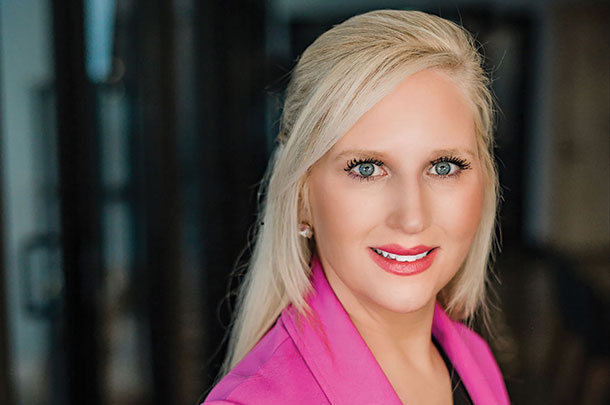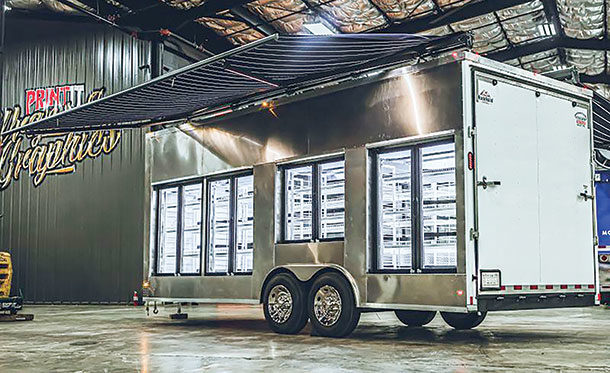During a 12-year career with MilkPEP and the “got milk?” campaign, Melissa Malcolm-Cullison focused her attention to creating awareness of the need for dairy, especially milk, in America’s food banks through programs such as The Great American Milk Drive, initiated in 2014.
As awareness of the need grew, the USDA began purchasing fluid milk through the Emergency Food Assistance Program (TEFAP), established in 2018.
With dairy donations coming in, Malcolm-Cullison turned her focus to a different problem: Building the necessary refrigeration infrastructure needed to safely deliver fresh foods, including dairy, to those Americans most in need through the nation’s food banks. Today, she serves as vice president of corporate partnerships with Cooler Management, a company that links refrigeration with corporations and nonprofit organizations to address those needs.
 Melissa Malcom-Cullison. Courtesy photo.
Melissa Malcom-Cullison. Courtesy photo.First, describe the challenge you see.
Malcolm-Cullison: There’s enormous fresh food waste while Americans are still going hungry every day. Currently, Feeding America reports 42 million Americans face hunger in the U.S., including 13 million children. Also, 13.5 million Americans reported that they live in a food desert and have limited to no access to fresh foods.
The USDA estimates that approximately 133 billion pounds of food, valued at $161 billion, is wasted each year. Hunger organizations can only save so much of this wasted food. Feeding America and its network of food banks rescues around 3.6 billion pounds of food each year. Safe and wholesome food that is currently thrown away could help feed hungry people and reduce food insecurity today.
What do you see as the biggest issue that hunger relief organizations face to stop food waste and get all these fresh foods to Americans?
Malcolm-Cullison: Food banks and food pantries are tremendously short on refrigeration. Refrigeration transportation to rural communities and food deserts have remained an even more serious issue that has yet to be tackled. It is estimated that of Feeding America’s 60,000 food pantries nationwide, less than 10% have ample refrigeration storage to safely store and serve fresh foods.
What is Cooler Management’s role in supporting change for solving the infrastructure challenge?
Malcolm-Cullison: Our vision is to ensure that fresh foods are delivered safely while being accessible to every American, which is what inspired the creation of our “Fresh Has No Boundaries” campaign. This campaign creates awareness to the desperate need of refrigeration infrastructure throughout the U.S. charitable food and school systems, while providing innovative solutions to offer equal access to fresh foods that truly nourish every American.
What kind of innovative solutions do you offer to provide equal access to fresh foods for Americans?
Malcolm-Cullison: We have just launched a new refrigeration market on wheels: The Park-It Market. The Park-It Market is a walk-up market that offers fresh, nutritious foods to food-insecure Americans located anywhere, including those located in food deserts or rural areas. The Park-It Market is an affordable solution to ensuring that fresh foods are available on a consistent basis. Coming in sizes of 16-foot and 20-foot trailers, the market can be towed by non-commercial vehicles and requires no CDL license to operate.
Lastly, but most importantly, it offers food dignity. The recipients are offered the experience, and opportunity, to choose their own food for their family’s needs and diet requirements.
How can your efforts and refrigeration infrastructure benefit dairy?
Malcolm-Cullison: We know fresh dairy items are in high demand in food banks across the country. Having built national milk donation programs previously, I learned that milk is in the top three most requested items, yet least donated items at food banks. Of the 42 million Americans served through Feeding America each year, most get less than 1 gallon of milk per person per year.
Just 1 gallon of milk per year is astonishing and unimaginable. Americans need the high-value, unmatched nutrition dairy offers. However, we will only be able to change this statistic if investments are made in proper refrigeration infrastructure.
The dairy industry, including processors, cooperatives and individuals, donated large volumes of milk and dairy products during the early stages of the pandemic. Have you worked to involve dairy cooperatives and other processors to make the connection to food banks?
Malcolm-Cullison: Yes, that is where I have focused most of my career efforts over the past several years. In my previous role, I worked closely with Feeding America and National Dairy Council to ignite donations and dairy purchase programs at food banks. When the pandemic hit, I worked closely with our partners at IDFA to understand the USDA commodity purchase programs and encourage dairy cooperatives and processors to partner in these programs – resulting in estimated 180 million-plus purchased gallons of milk to food banks during 2020 and early 2021. During this time is when the excessive need for refrigerated infrastructure became spotlighted. There were billions of dollars in food purchases; however, not the infrastructure to accept it and store it properly.
How is the refrigeration, including installation and maintenance, funded?
Malcolm-Cullison: Cooler Management has a turnkey solution for managing these programs, and we are able to provide every step of a cooler’s life cycle. From procurement and warranty management to installation and maintenance, to decommissioning and finding a pantry for a cooler to sunset its life cycle; that’s what we do for our clients. We have found homes in pantries for thousands of refurbished coolers within the charitable food system, but it barely makes a dent in the total demand. Even with the percentage of sales we donate to charitable organizations in our giveback programs, the need for infrastructure continues to rise. Right now, this is not something we can solve on our own; it is a $100 million challenge to adequately build the refrigerated infrastructure needed to store and transport perishable foods.
Are there any specific steps dairy farmers, dairy co-op leaders or others can take to get involved? How can they get involved to support more dairy and refrigeration in food banks?
Malcolm-Cullison: It is pretty simple. Without more refrigeration in hunger relief organizations, they can’t accept or safely store more dairy. Under our Fresh Has No Boundaries Campaign, we are encouraging farmers, processors and private businesses to make donations for refrigerated infrastructure to Feeding America, GenYouth and DFA Cares. Please contact me directly at melissa@coolmgt.com to learn more about partnering together.
Visit our website to learn more about Fresh Has No Boundaries at Cooler Management or contact me directly.







